Introduction #
Zapier integration in Notification Master plugin allows you to automate workflows by connecting your WordPress site to various apps through webhooks. This guide will walk you through the steps to create a Zap for a custom webhook in Zapier and add a Zapier integration to either an existing notification or a new notification on your WordPress site.
Benefits Of Integrating With Zapier #
Integrating Notification Master plugin with Zapier provides several benefits:
- Automation: Automate repetitive tasks by connecting your WordPress site to over 2,000 apps supported by Zapier.
- Efficiency: Streamline your workflow by setting up triggers and actions that perform tasks automatically, saving you time and effort.
- Flexibility: Customize your notifications to send data to various applications like Google Sheets, Slack, Trello, and more, based on specific events on your WordPress site.
- Scalability: Easily scale your operations by adding new Zaps as your needs grow, ensuring your workflows remain efficient and effective.
Steps To Create A Zap For A Custom Webhook In Zapier #
Log in to Zapier: #
- Open the Zapier website and log in to your account.
Create a New Zap: #
- Click on the Create button.
- In the dropdown menu, select Zaps.
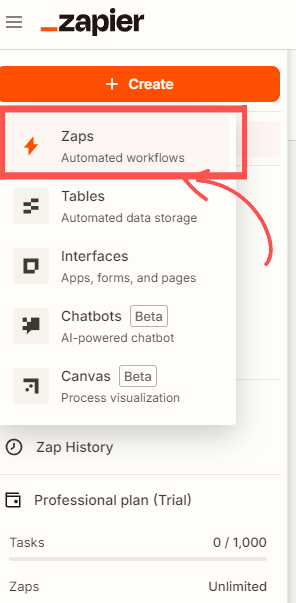
Set Up the Trigger: #
- Click on Trigger.
- In the search bar, type Webhook and select Webhook by Zapier.
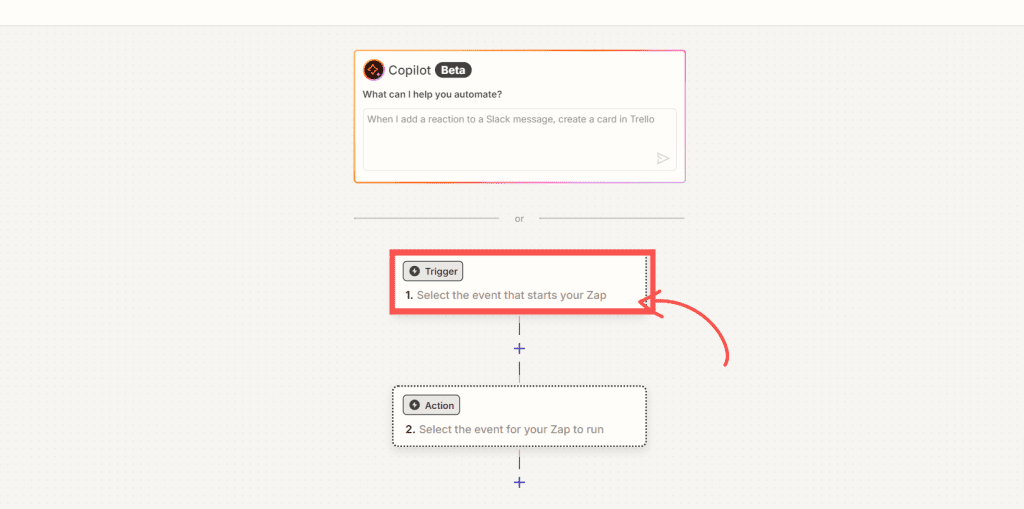
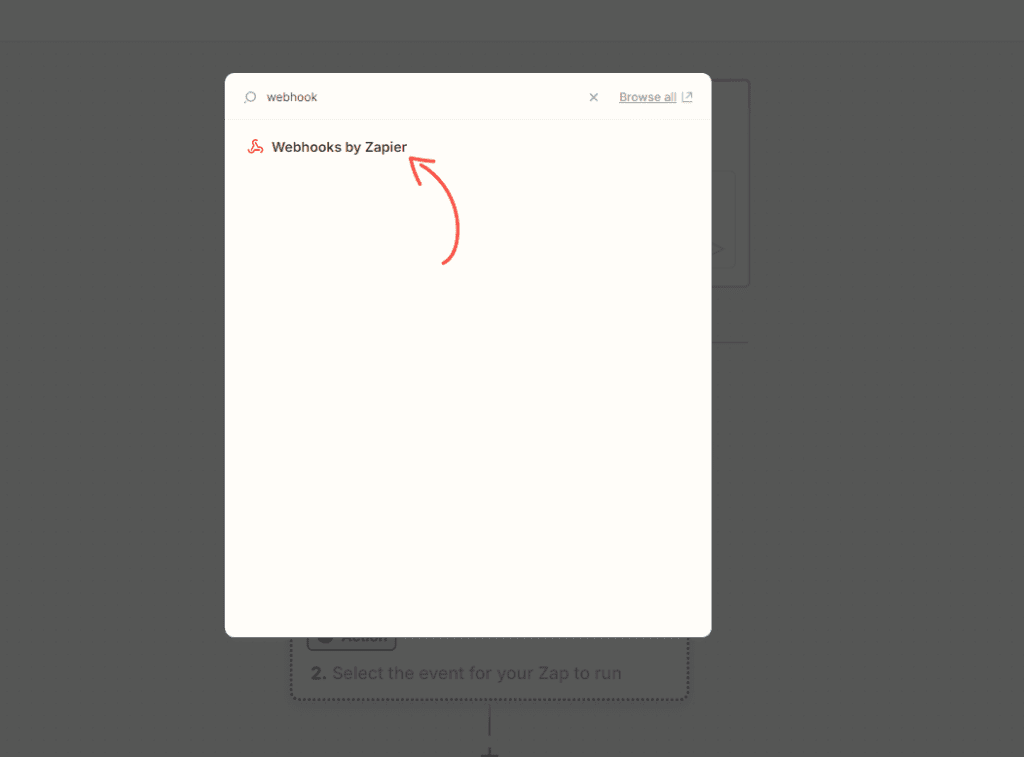
Configure the Webhook: #
- In the Trigger settings, choose Catch Hook as the event.
- Click Continue.
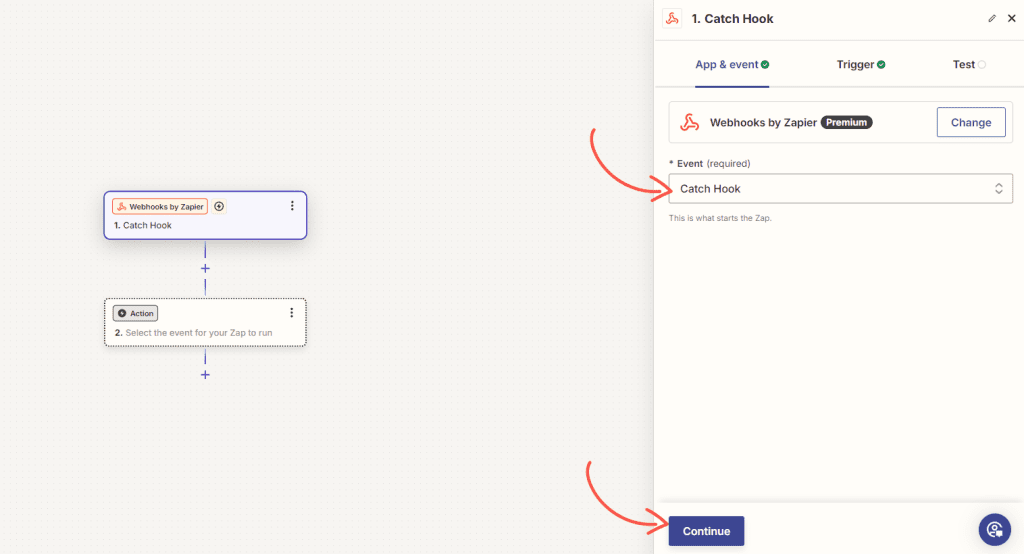
Complete the Trigger Setup: #
- Click Continue on the following screen without changing any settings.
Get the Webhook URL: #
- Zapier will provide you with a custom webhook URL. Copy this URL as it will be used in Notification Master plugin.
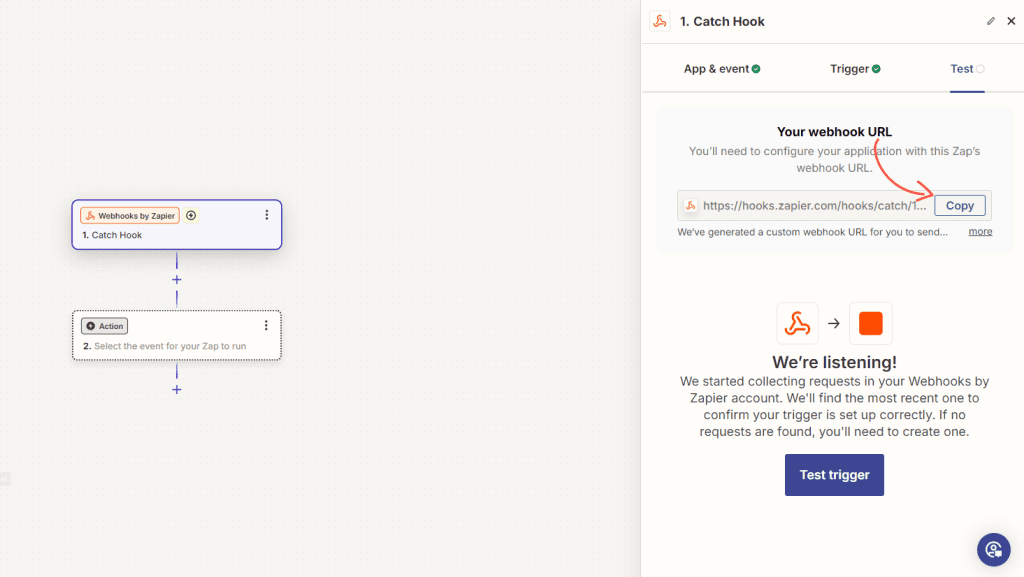
Steps To Add A Zapier Integration To Notification Master #
1. Navigate to Notification Master #
Accessing Notification Master plugin:
- From the main menu on the left, scroll down and click on Notification Master.
- This will open the main interface of the Notification Master plugin, where you can manage all your WordPress notifications.
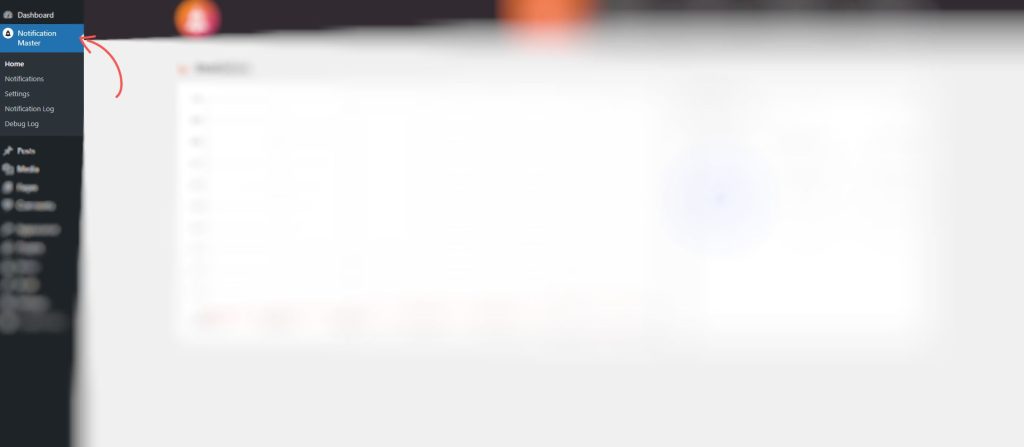
2. Access Notifications #
Opening the Notifications Tab:
- Locate the Notifications tab within the Notification Master interface.
- Click on the Notifications tab to view a list of all existing notifications. Here, you can manage, edit, or delete existing notifications.
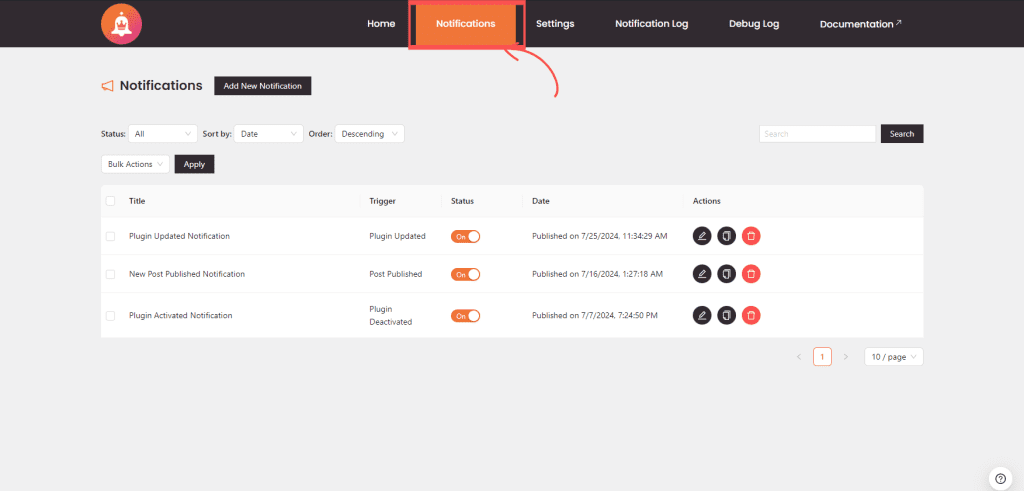
3. Add a Zapier Integration #
You can add a Zapier integration to an existing notification or while creating a new notification.
To Add an Integration:
- In the notification configuration settings, scroll down to the Connections section.
- Click on Add Connection to create a new connection for this notification.
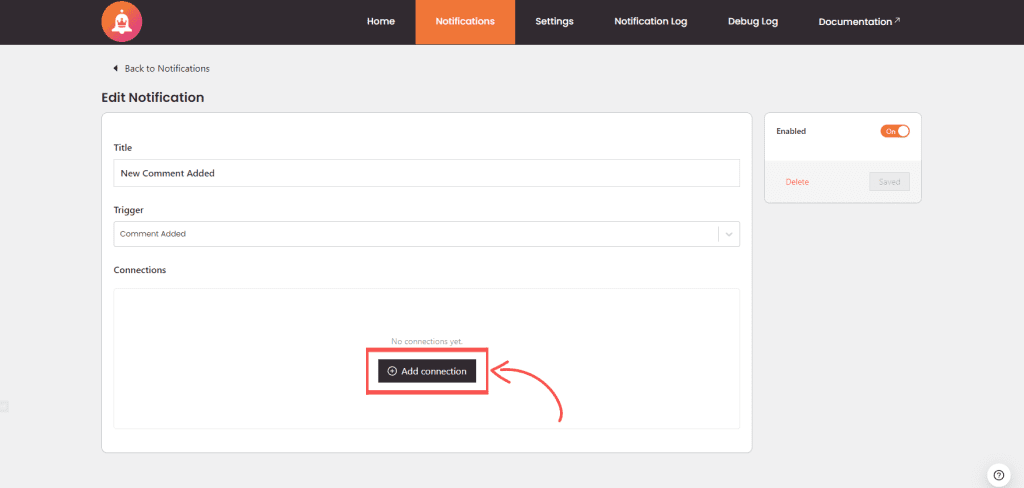
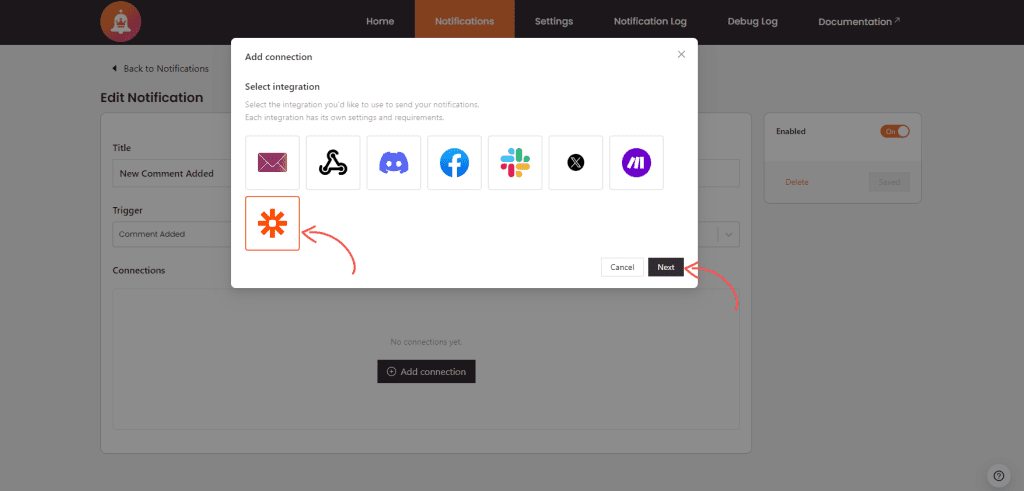
4. Configure the Zapier Integration #
Setting Up Zapier Integration:
- Connection Name: Enter a name for your integration to easily identify it later. This field is required.
- URL: Paste the Zapier webhook URL you copied earlier. This field is required.
- Body: Define the fields that will be included in the request body. This is useful for sending specific data to Zapier. Click on Add Field to include multiple fields. You can use merge tags to dynamically insert content, such as
{{comment.id}}or{{comment.content}}. - Enable Integration: Ensure this switch is toggled on to activate the Zapier integration.
- Send Test Notification: Click on Send Test Notification to send data to Zapier. This step is crucial to verify the connection and ensure that the data is being sent correctly.
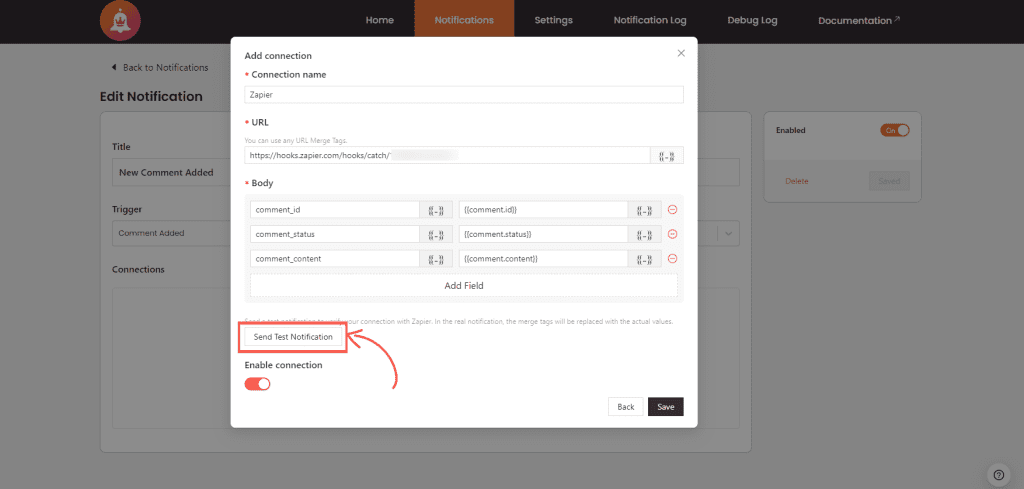
- Test Trigger in Zapier: After sending the test notification, go back to Zapier and click on Test Trigger. Zapier will check the webhook URL and display the data received. This confirms that the connection is working correctly and that the data is being sent as expected.
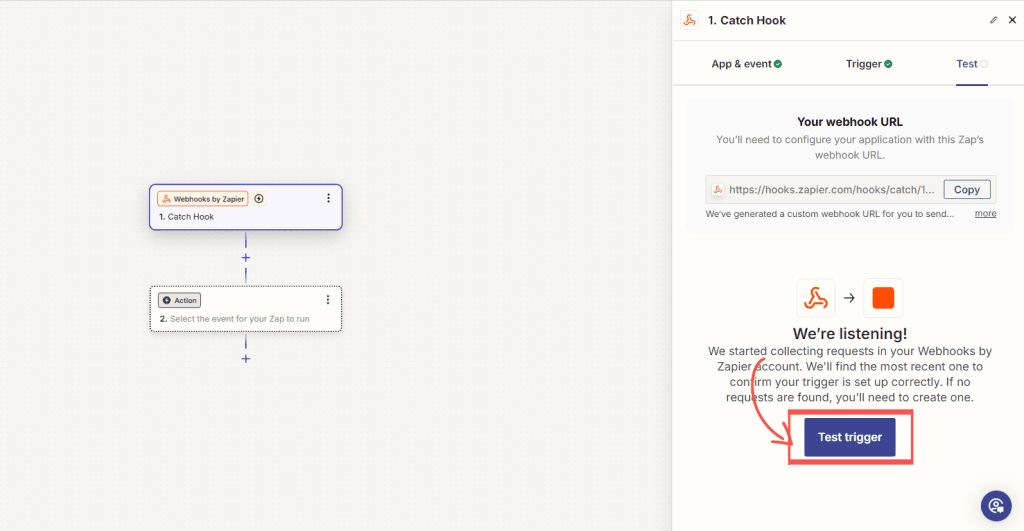
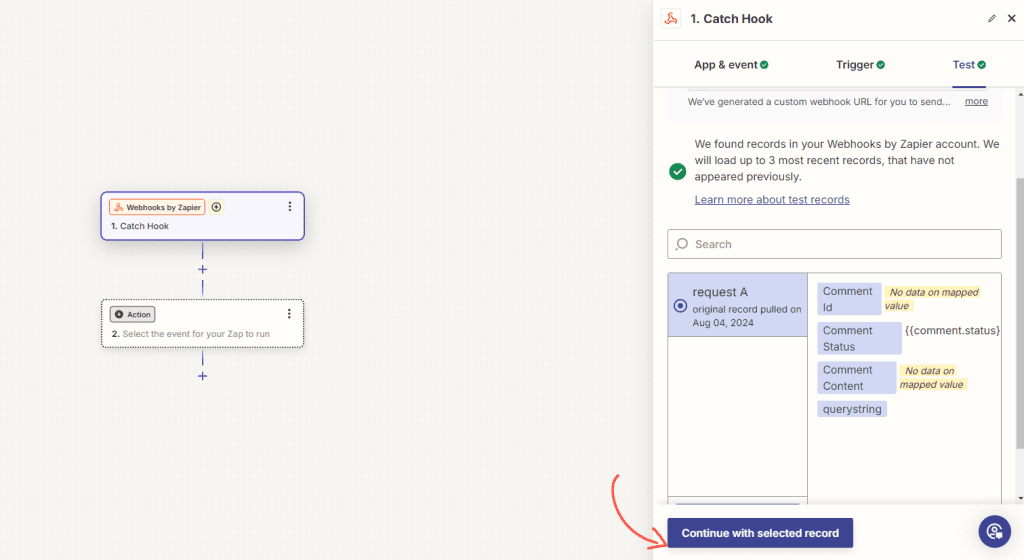
- Save the Integration: After configuring the Zapier settings and verifying the connection, click Save to save the integration. This will close the connection modal and apply the settings to your notification.
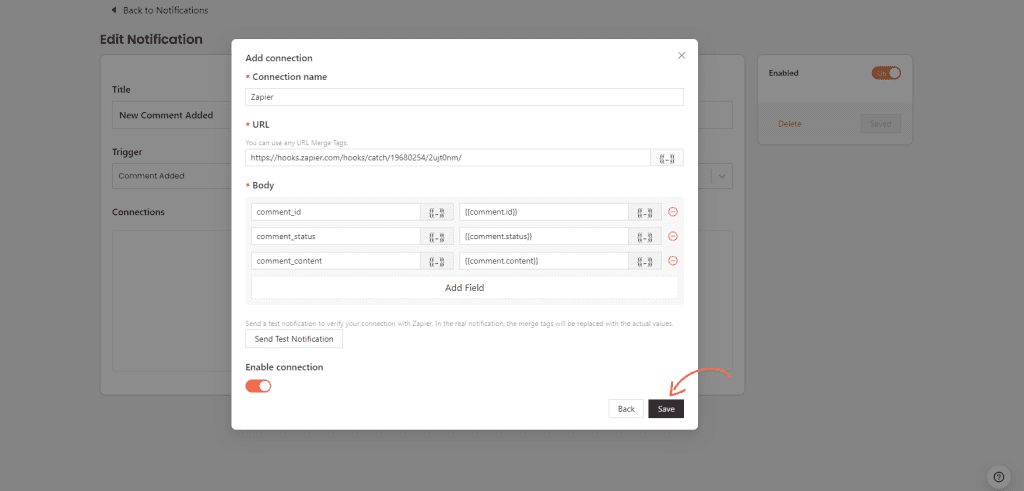
5. Finalize and Save the Notification #
Updating the Notification:
- Ensure that all necessary integrations, including the newly added Zapier integration, are properly configured.
- To ensure your notification is active, toggle the activation switch if it isn’t already on.
- Finally, click Save to update and save your notification configuration. Your notification is now ready to send data via the Zapier integration you configured.

Conclusion #
By following these steps, you can effectively add and configure a Zapier integration to an existing notification or create a new notification in Notification Master plugin. This feature enhances the flexibility of your WordPress notification system, allowing you to integrate with various services and automate workflows. For more detailed guides on using Notification Master plugin, refer to our comprehensive documentation or contact our support team.




